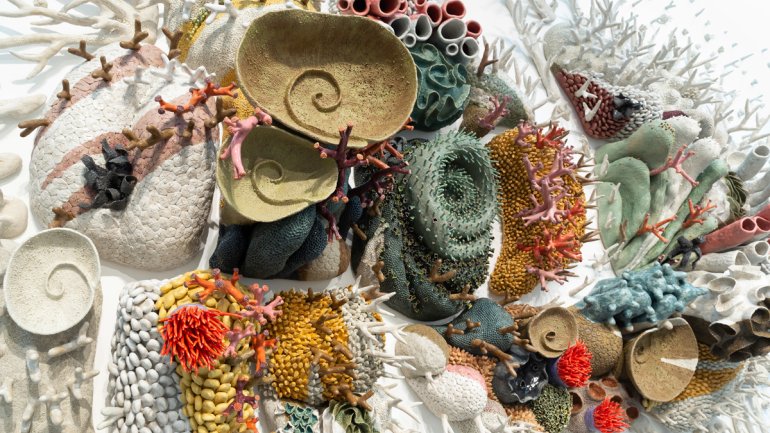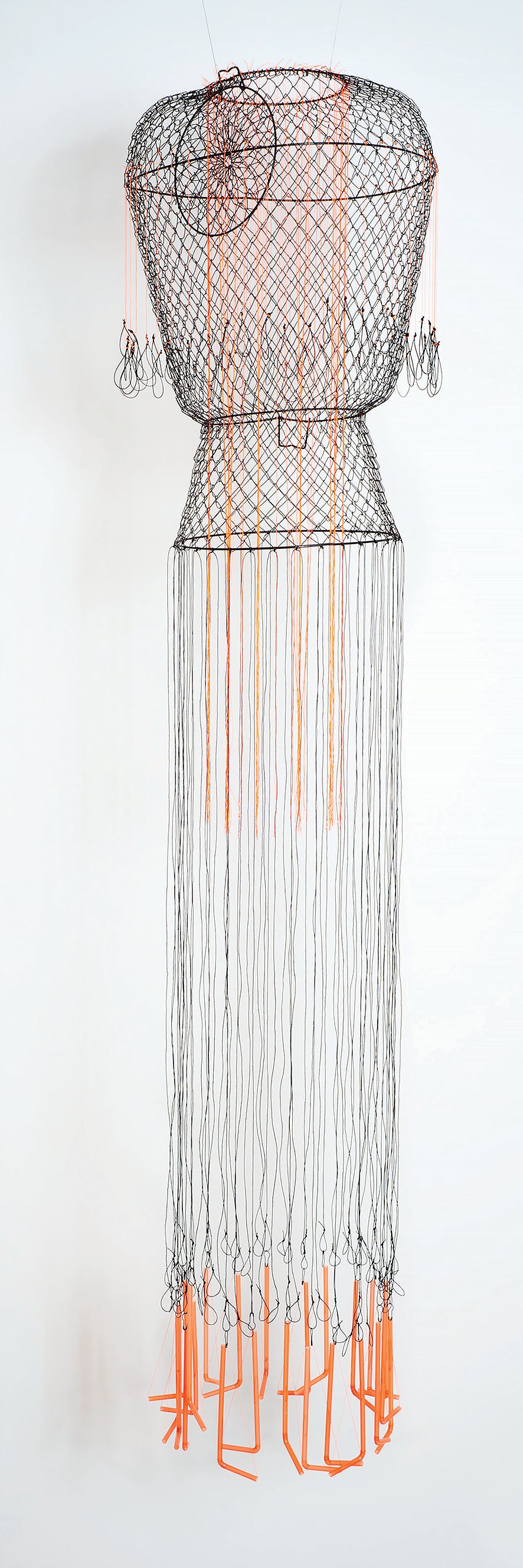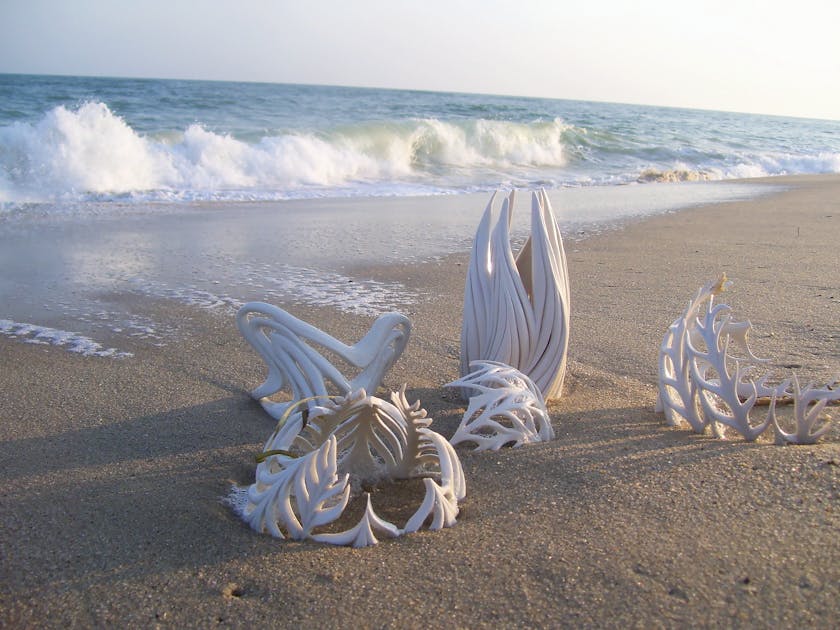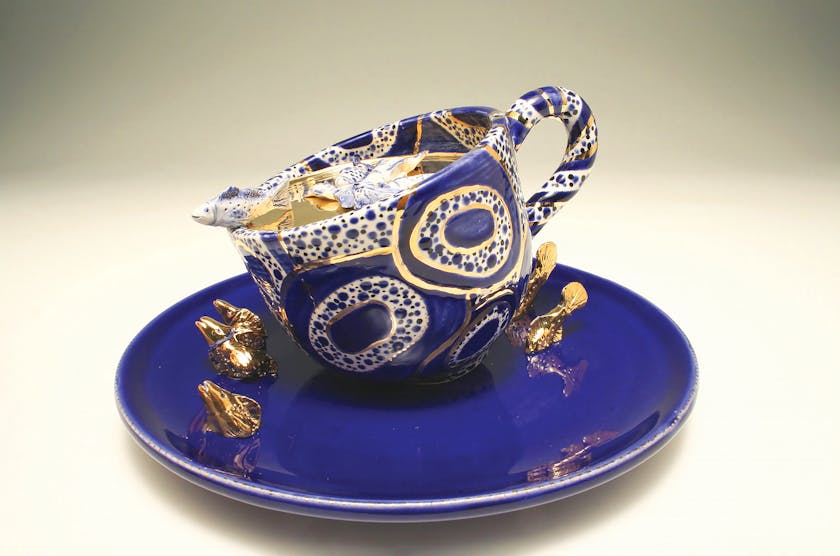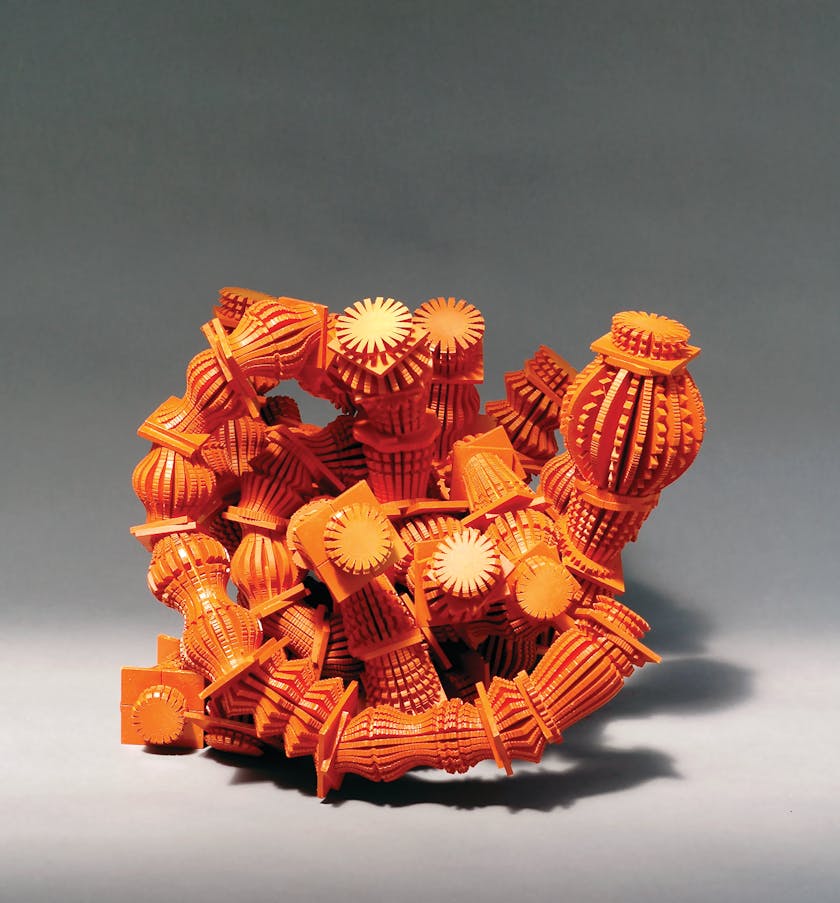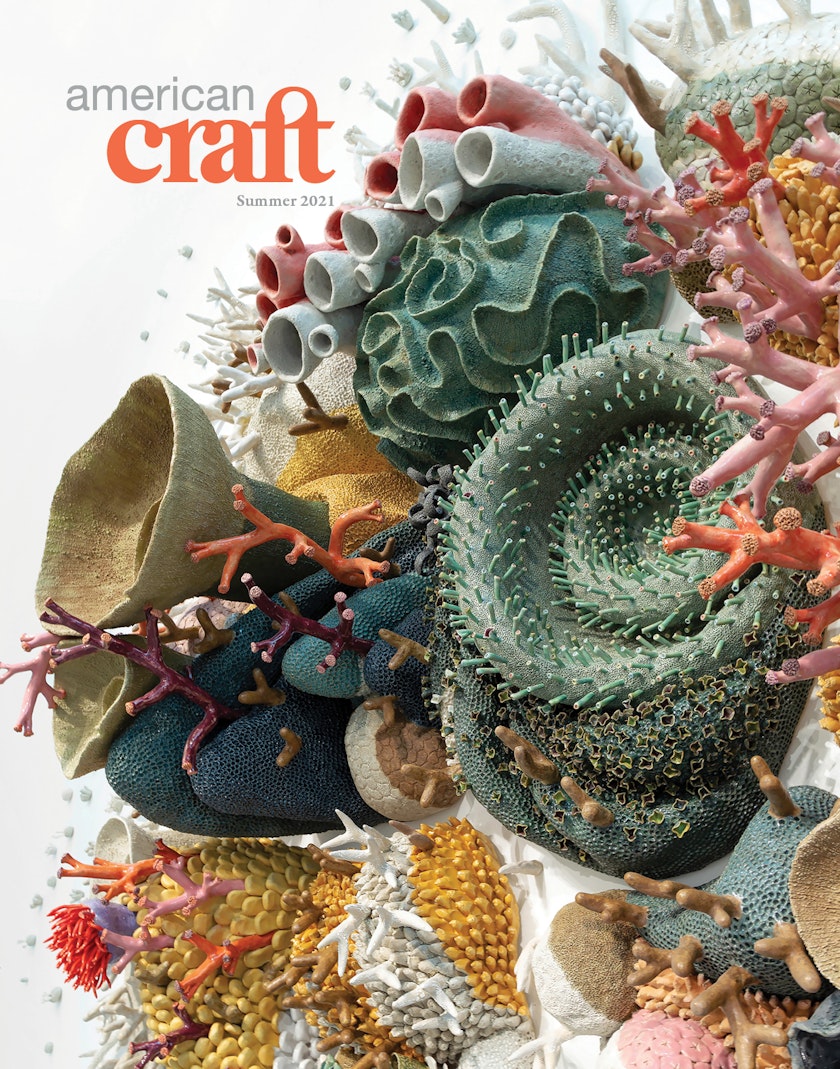Sea Change
Sea Change
Featured on the cover of the Summer 2021 issue of American Craft magazine: Our Changing Seas IV (detail), a 2019 glazed stoneware and porcelain work by Courtney Mattison, measures 132 x 204 x 22 in. Photo by Courtney Mattison.
Ceramist and ocean advocate Courtney Mattison brings us up close to life in coral reefs with Confluence (Our Changing Seas V) (2018). “From the tiniest snapping shrimp to the largest whale shark, coral reefs are sanctuaries for life’s exuberance,” says the Los Angeles–based artist. “In reefs as in cities, each individual plays a role that can affect how the ecosystem functions. The key to success is finding harmony in heterogeneity—unity in diversity. Yet today, reefs face unprecedented threats from human impacts.”
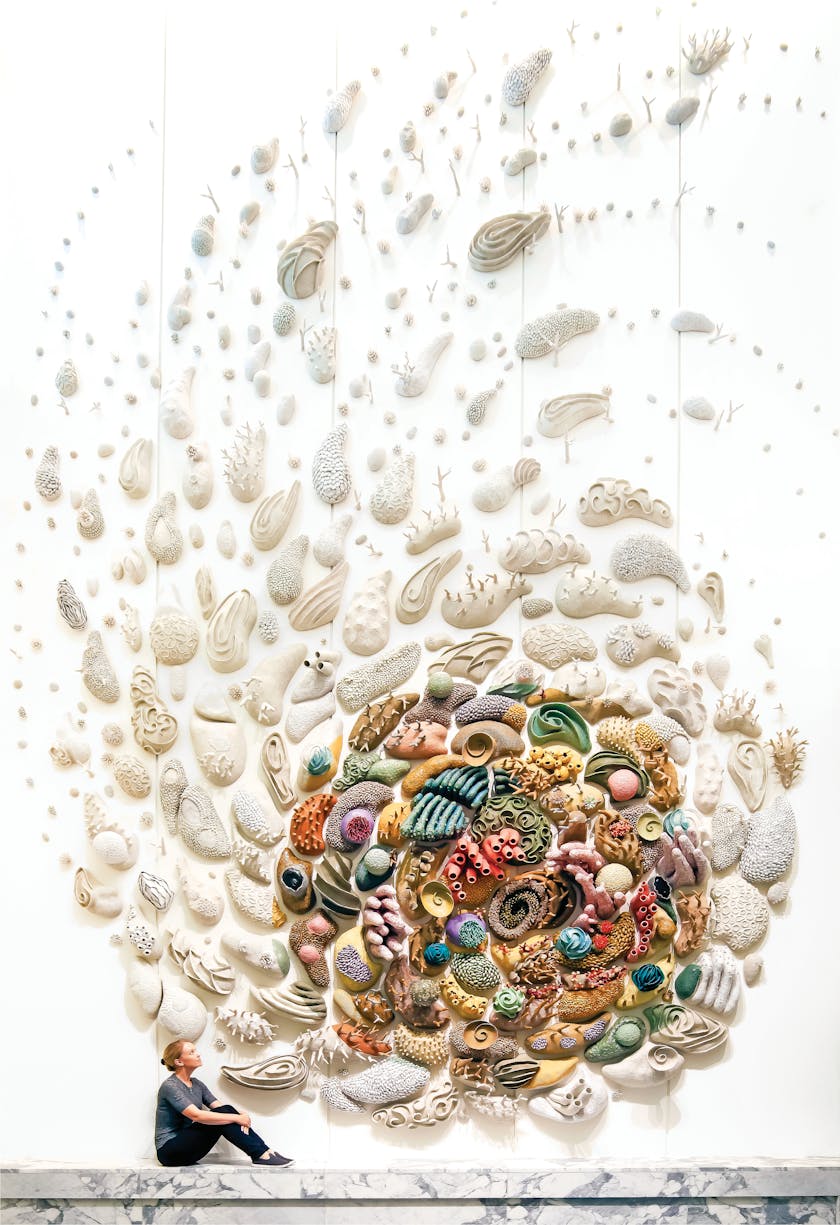
Courtney Mattison’s Confluence (Our Changing Seas V) is in the permanent collection of the US Embassy in Jakarta, Indonesia. Photo by Amanda Brooks, courtesy of Art in Embassies, US Department of State Permanent Collection for US Embassy Jakarta.
Because of its diversity, health, and resilience, Mattison calls Indonesia’s share of the Coral Triangle “the last bastion of hope for a future with healthy oceans.” In Confluence (Our Changing Seas V), with its wildly alive center and pale outer edges, she pays homage to those reefs and highlights the threats they face from climate change and coral bleaching.
Made from glazed stoneware and porcelain, the artwork is massive at approximately 28 x 19 x 2 feet. Mattison felt it was essential that the medium of this work be ceramic, as “calcium carbonate is both a common ingredient in clay and glaze materials and the substance precipitated by reef-building corals to form their stony skeletons,” she says. “Not only does the chemical structure of my work parallel that of a natural reef, but brittle porcelain anemone tentacles and stoneware coral branches break easily if improperly handled, similar to the delicate bodies of living reef organisms.”
The ceramic assemblage is part of the Art in Embassies program of the US Department of State and is in the permanent collection of the US Embassy in Jakarta, Indonesia. Mattison hopes the work not only inspires a sense of excitement in viewers to the connections we share with reefs, but also empowers individuals and policy makers to act to conserve.
Mattison is one of many artists who hope their art will raise awareness and consciousness about oceans, and one of many whose work (in Mattison’s case her much smaller work) is part of Making Waves: Ocean Ecology & Craft, an exhibition at the Craft in America Center in Los Angeles. In the next pages, we introduce you to some of its artworks, which address issues like warming seas and plastic pollution, as well as reverence for natural forms. Beautiful and prophetic, these pieces beckon us to pay more attention and, often, to act.
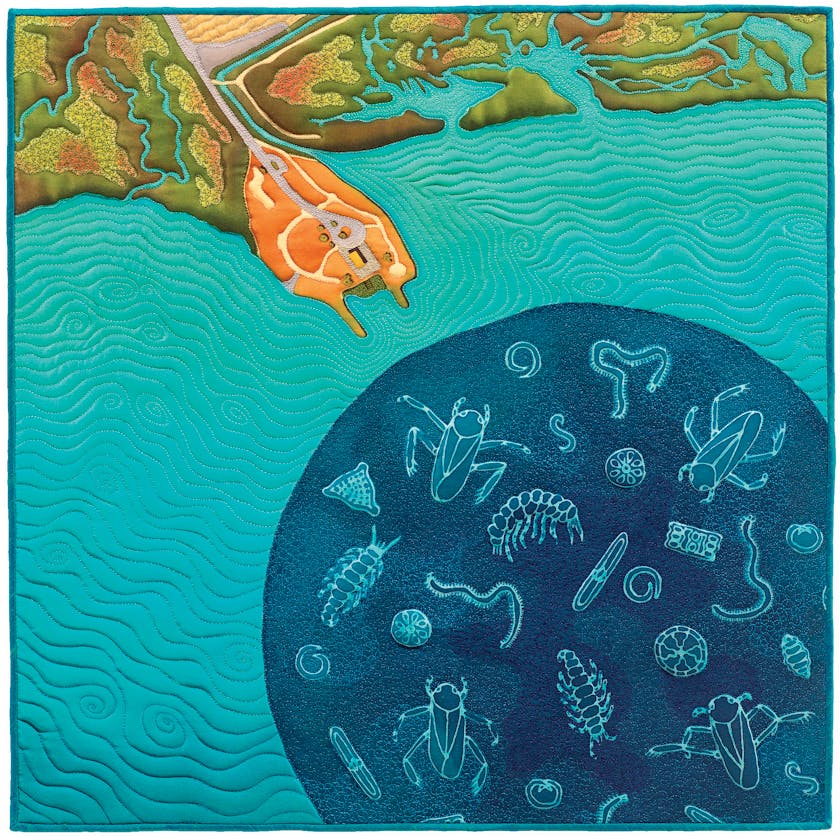
Photo by Don Tuttle.
Recovering from Toxic Waste
Cooley Landing near the south end of the San Francisco Bay was once a toxic landfill site. Linda Gass offers a bird’s-eye view of the site in Cooley Landing: Life in Water (2015). Made of silk crepe de chine and hand-painted using Remazol dyes and water-soluble resist, the 18.5 x 18.5 in. work also celebrates how the sea has recovered by showing a view under the microscope of mud and water samples taken nearby, which reveals amphipods, nematodes, water boatman insects, and more. “I use beauty to encourage people to look at hard environmental issues,” says Gass, who lives in the Bay Area. “I prefer to work in textiles so my work has an approachable and familiar feeling.”
What’s Discarded
A well-traveled scuba diver, Blue McRight has seen up close the trash that fouls vast stretches of the ocean. “The devastating issue of ocean plastic is both subject and material for me,” says the artist, who lives in Venice, California. “I insist that salvaged plastic trash such as nets, straws, lids, rope, and other objects can be beautiful and important as material for artwork, forcing us to confront the possibilities of what we thoughtlessly discard, giving agency to the rejected as it assumes space in the realm of cultural dialogue, alluding to what is overlooked and wasted.” Her We Were Here, and We Were Never Here (2020), invoking a jellyfish in the medusa life stage, is made of a salvaged bait basket, plastic straws, and thread. She explains that the 65 x 15 in. work’s title points to both presence and absence. “Creatures actually lived and died in this piece,” she says. Her works “carry the weight of phantoms. They speak of life, death, and escape.”
It’s All Interconnected
Jennifer McCurdy, who has been working with porcelain for more than 40 years, said that when driving through Cleveland her perception shifted. “The whole city was like a coral island that had been raised from our own extrusions,” says the artist, whose studio is on Martha’s Vineyard in Massachusetts. “We live on the bottom of an ocean of air. We create and build and grow things here, out of the materials around us, for our own purposes.” Her works (above), which often invoke coral, are celebrations of natural forms. Coral Nest (2020) is a 7 x 11 x 11 in. bowl with a series of smaller bowls nested inside (right). To create the greenware porcelain bowls, McCurdy carves each one until it has more negative space than positive. “By nesting them back together, I create an enlarged fractal density that is fairly equally dispersed throughout the whole three-dimensional space that the form is occupying,” says McCurdy. “Coral Nest’s namesake, the coral in the ocean, also holds space in three dimensions, allowing water and other life-forms to flow freely through it.”
The Textures of Oil
After the 2010 Deepwater Horizon oil spill in the Gulf of Mexico, Ana Lisa Hedstrom created Amphitrite: Queen of the Sea Cries Tears of Brown Oil (2011). It’s part of the La Honda, California–based artist’s Terra Enferma series, whose title, meaning “Sick Earth,” plays on the phrase terra firma (“solid ground”). Hedstrom, who was elected a Fellow of the American Craft Council in 2003, created the shibori-dyed work, which includes synthetic felt made from recycled plastic bottles, to prompt a conversation, she says. “I hope my own dialogue with the process, color, and piecing will ultimately speak to the viewer.”
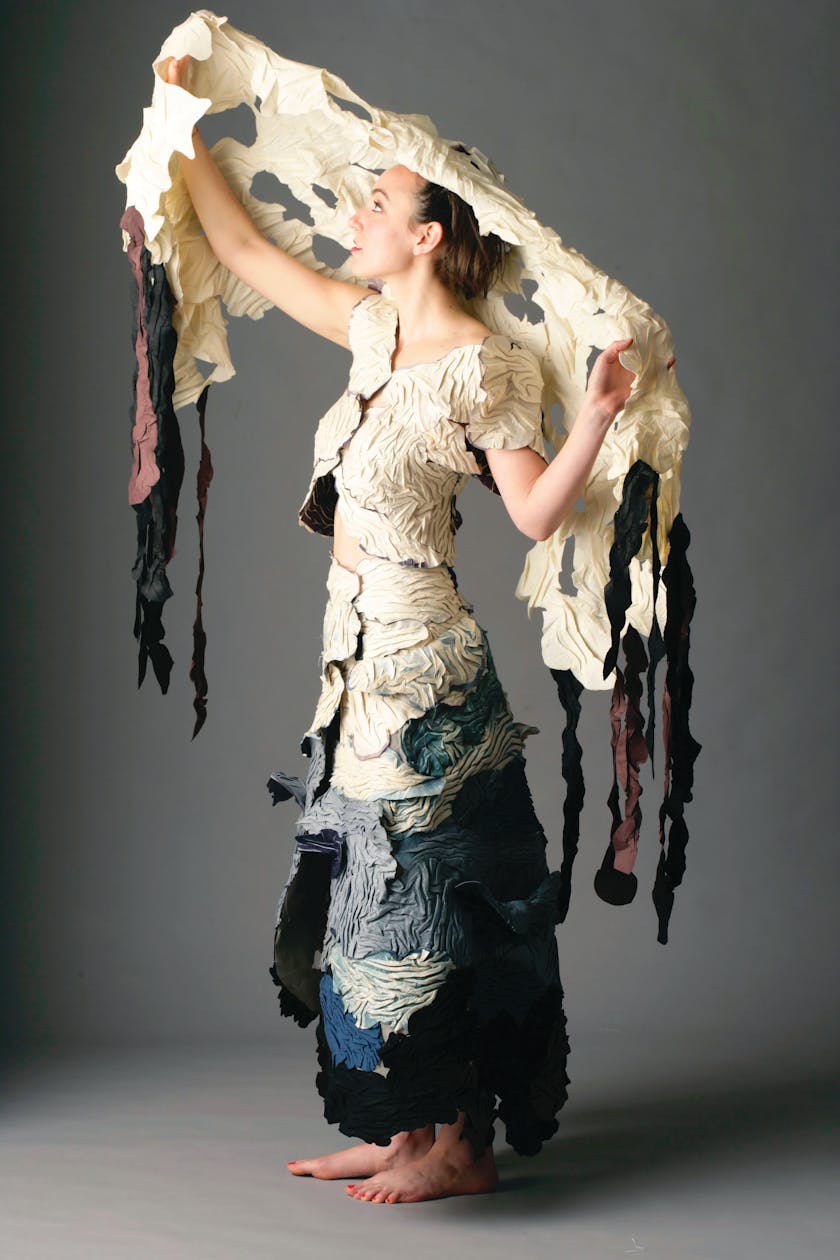
Photo by Kim Harrington.

Photo by Saul Steed.
The Many Deaths of Coral Reefs
After the 2011 Fukushima nuclear power plant disaster, Timothy Horn saw Old Plum by 17th-century Japanese painter Kano Sansetsu. Having already seen the effects of climate change on the Great Barrier Reef in his native Australia, he thought of the damage the contaminated water would wreak. Years later he completed Gorgonia 15 (2018), a wall-hung piece of nickel-plated bronze “jewelry,” with globes of mirrored blown glass. To create this 84 x 90 x 9 in. piece that calls attention to the death of coral reefs, Horn, who lives on Cape Cod, drew on the designs of Gilles Légaré, court jeweler to Louis XIV; 19th-century studies of lichen, seaweed, coral, and other natural forms; and the Greek myth of the Gorgon, whose victims turned to stone. “These pieces are hybrids,” says Horn, referring to Gorgonia 15 and others in his Coral Works series, “jewel-like but also crusty.”
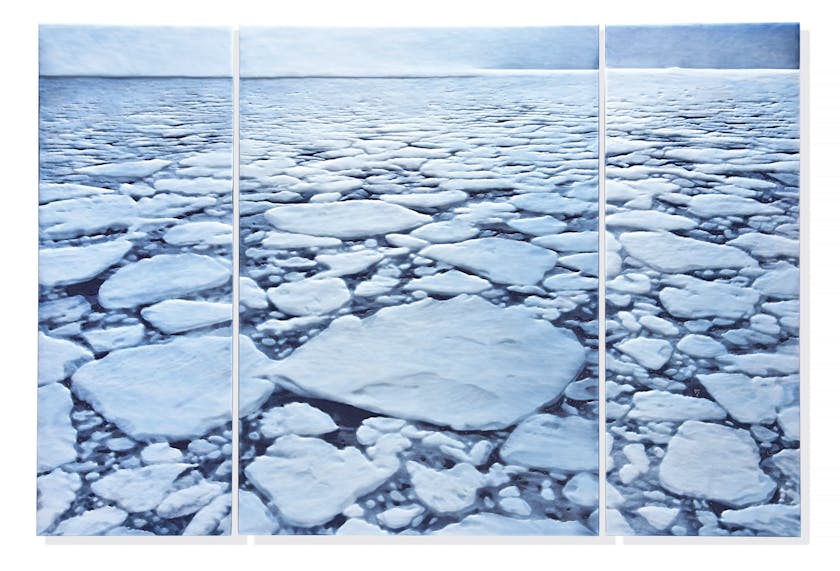
Photo courtesy of the artist.
Recording a Warming Planet
The West Antarctic Peninsula is one of the fastest warming regions on earth. Glass artist and conservation researcher April Surgent depicts the region’s spring sea ice breaking up in The Last Frozen Ocean (2015), a low-relief, wheel-cut 18.25 x 27.5 x .75 in. carving in glass. Surgent, who aims to foster environmental consciousness by documenting what she learns from nature, was trained in glassblowing, then switched to glass engraving under Czech master Jiří Harcuba at the Pilchuck Glass School. The Port Townsend, Washington–based artist sees engraving as an archival record during a time when the world is experiencing “immeasurable transformation.”
More Art of the Sea
Visit Making Waves: Ocean Ecology & Craft at craftinamerica.org to view more work from the artists in these pages. There you’ll find additional artists’ works (pictured below) that address issues such as overfishing and human-generated carbon dioxide, as well as pieces that celebrate life under the sea. The exhibition runs through August 21, 2021.
Joan Takayama-Ogawa
Tipping Point Fish, 2008, ceramic, 5.5 x 8 x 8 in. Photo by Steve Ogawa.
Christopher Edwards
43 Coral Canaries, 2020, high-fired stoneware, approx. 3 x 1 in. each. Photo by Christopher Edwards.
christopheredwards.net | coralcanary.org
Sarah McMenimen
April Silencer, 2017,aluminum casts, copper wire, shells, brass bells, fork, necklace chain, collar, mic stand, 31 x 22 x 55 in. Photo by Marten Elder.
Po Shun Leong
Under the Sea, 2009, painted maple wood, 13.5 x 18.5 x 14 in. Photo by Po Shun Leong.
Discover More Inspiring Artists in Our Magazine
Become a member to get a subscription to American Craft magazine and experience the work of artists who are defining the craft movement today.


